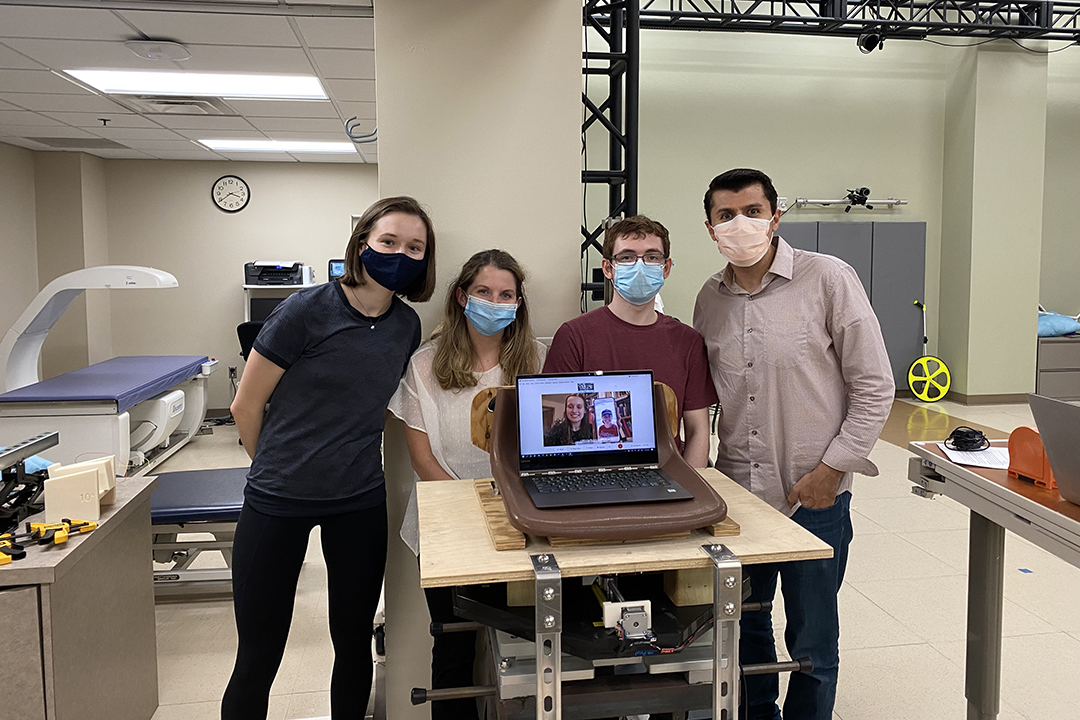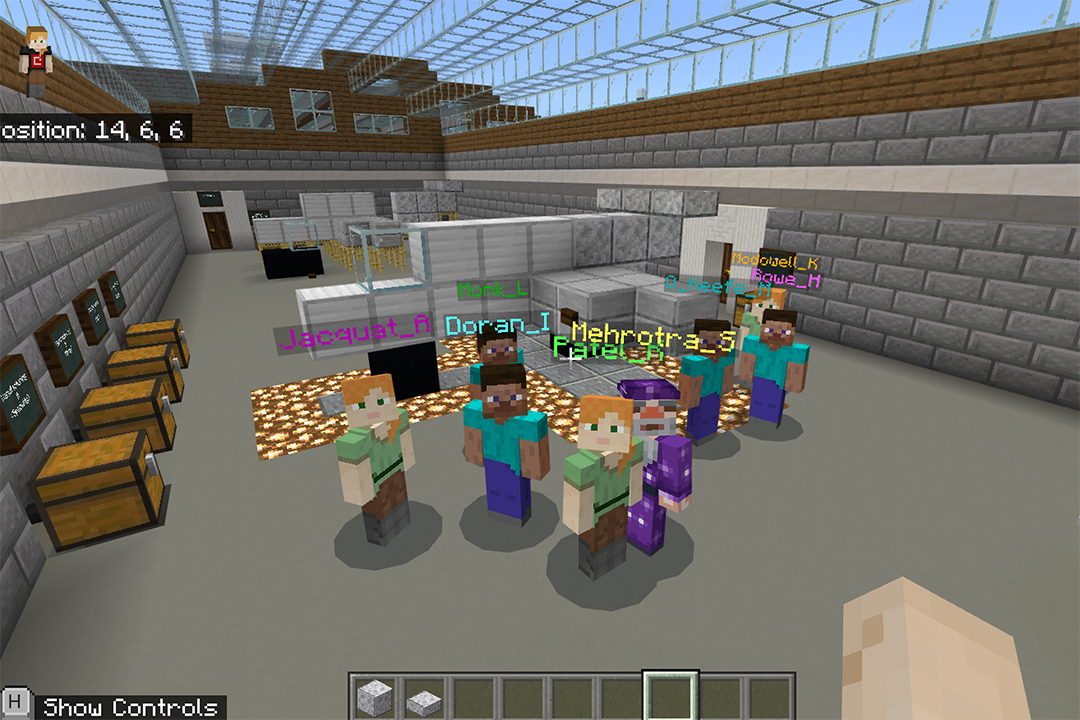By Kristen Mitchell
A team of George Washington University School of Engineering and Applied Science undergraduate students designed a mechanized chair that enables researchers who collect important data to assist with the care of amputees to work with improved speed and efficiency.
The chair was designed as part of a SEAS capstone project that brought together seniors in the Department of Biomedical Engineering and the Department of Electrical and Computer Engineering. Caitlyn Pratt, Shannon French, Justina Pruski, Courtney Dutile and Nicholas Brignola—who all graduated in May—spent the past academic year collaborating on the project with researchers at Walter Reed National Medical Center and Quality of Life Plus, a nonprofit organization that brings together college students to create assistive technology for our country's wounded veterans and military personnel.
“The ability to have a direct impact on improving patient outcomes and clinical outcomes by improving how these researchers are able to conduct their research, it was definitely something I was excited to work on,” said Ms. Pratt, B.S. ‘21. “The impact we could have can’t be totally known right now, but...as far as the ability for them to learn more about this research and integrate it into other settings for rehabilitation purposes, it could be years to come.”
Researchers use the unstable chair device to characterize the effects of lower limb amputation on postural control, an individual’s ability to assume and maintain upright posture while seated without support. The original unstable chair device had to be adjusted by hand, a task that required the help of multiple technicians. It also required the patient to get on and off the chair several times. The GW team aimed to reduce the effort and overall burden on the patients and researchers without adversely affecting data collection.
[video:https://youtu.be/aBPbOceDyGw width:560 height:315 align:center lightbox_title:Mechanizing the Adjustability of an Unstable Chair Capstone Video]
The students spent the past academic year designing several iterations of the new chair digitally and using the GW machine shop, relying on the mechanical, hardware and software skills they cultivated during their undergraduate education. The group ultimately created a final product that relies on automated spring movement. This allowed them to successfully improve researchers’ ability to adjust and calibrate the chair while also improving overall safety of use.
Whereas it took researchers 90 seconds to manually adjust springs on the old chair, they were able to complete this task in under 15 seconds using the new mechanized chair.
Ms. Pruski, B.S. ‘21, said it has been rewarding to contribute new tools for research. While the chair was specifically designed for veterans and military personnel at Walter Reed, it could be used more broadly for civilian patients in the future.
“The unknown of what they could do with this is just really awesome,” Ms. Pruski said.
The SEAS capstone team had to figure out how to navigate completing their capstone within the virtual learning environment. Amir Aslani, B.S. ‘08, Ph.D. ‘16, assistant professor in the Department of Electrical and Computer Engineering who oversaw the project, said a lot of planning was needed to ensure students were progressing throughout the semester.
“I’m very proud that given the circumstances, given COVID, and the challenges and constraints with the virtual environment, that our students were able to work on a very high-impact project,” he said.
Ms. Pruski and Ms. Dutile worked on the project remotely while Ms. French, Ms. Pratt and Mr. Brignola lived in Washington, D.C. The students collaborated over Webex, and those in-person worked alongside virtual team members, providing detailed measurements of the original chair and helping to implement new components they developed. When the team delivered the chair to Walter Reed, Ms. Pruski and Ms. Dutile joined a video conference to hear the researchers’ feedback firsthand.
Delivering the chair and seeing researchers test it out was the culmination of months of hard work, said Ms. French, B.S. ‘21.
“It was exciting to go there and see our product being used,” she said. “Probably one of the best days of the semester.”



